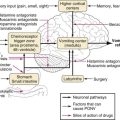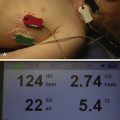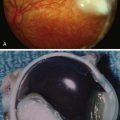Patient safety and quality of care are paramount in the complex arena of healthcare. Healthcare providers constantly seek ways to enhance these critical aspects, knowing that effective resources and strategies can make a substantial difference. From clear communication to technology integration and ongoing education, several elements contribute to safer, more efficient healthcare delivery. In this article, we explore the resources that can help healthcare providers achieve these vital goals.
Understanding the Role of Effective Communication in Patient Safety

Clear communication in healthcare is not just beneficial; it’s a critical component in ensuring patient safety. Miscommunication can lead to medication errors, incorrect diagnoses, and treatment delays. Healthcare systems are now prioritizing protocols that encourage open and accurate dialogue between team members, patients, and families.
Training programs aimed at enhancing communication skills have become an integral part of a healthcare professional’s education. These programs cover a range of scenarios, from breaking bad news to handing over patient care during shift changes. It’s all about fostering an environment where details are conveyed correctly and acknowledged.
Adopting standardized communication tools such as SBAR (Situation, Background, Assessment, and Recommendation) has also been shown to improve outcomes. These tools provide a framework for discussions, ensuring that all necessary information is included and understood. Such frameworks can lead to a sustainable reduction in errors.
Streamlining communication channels can also include patient safety solutions, which specialize in analyzing communication breakdowns and providing recommendations to mitigate risks. By using these targeted resources, healthcare organizations can significantly improve patient safety metrics.
Navigating the Landscape of Healthcare Technology for Better Outcomes

Technology has transformed healthcare delivery, offering tools that improve patient care and safety. Electronic health records (EHRs) are central to this transformation, as they provide comprehensive patient data at the touch of a button. Yet, the integration of such complex systems comes with challenges, including the need for thorough staff training and maintenance.
The growth of telemedicine has also played a pivotal role in increasing access to care, particularly in rural or underserved areas. Providers must be adept in using these technologies to extend their reach without compromising the quality of care. Ensuring that these systems are secure and user-friendly is essential for both providers and patients.
Furthermore, healthcare apps and wearable devices have become valuable in monitoring patient health and collecting data. These innovations demand a certain level of tech-savvy from providers to interpret and utilize the data effectively. As these tools proliferate, navigating the vast landscape of options is as important as understanding their practical applications.
Choosing and implementing healthcare technology also involves considering the return on investment and the potential for improved outcomes. Each technological adoption must be assessed for its capability to reduce errors, streamline workflows, and enhance patient safety to make it a worthwhile addition to the healthcare setting.
Implementing Evidence-Based Practices to Enhance Clinical Decision-Making
Implementing evidence-based practices is central to modern healthcare. By relying on research and data, healthcare providers can apply the most effective treatments and interventions, improving patient outcomes and safety. This method contrasts with traditional practices based solely on anecdotal experience or unverified approaches.
Establishing guidelines and protocols based on solid evidence not only standardizes care but also minimizes inconsistencies that can lead to patient harm. Healthcare providers must be equipped to navigate through emerging research and discern which findings are robust enough to inform their clinical decisions.
Integrating these practices requires an ongoing commitment to education and the support of an organizational culture that values evidence over intuition. Tools such as clinical pathways, algorithms, and decision-support systems can aid providers in incorporating evidence-based practices into their daily workflow.
While evidence-based practices are key to improving patient safety, they must also be paired with a personalized approach to care. Providers need to consider the individual patient’s circumstances and preferences when applying evidence-based recommendations, ensuring that the care delivered is both effective and respectful of patient autonomy.
Overall, prioritizing patient safety and quality care requires healthcare providers to leverage effective communication, advanced technology, and evidence-based practices. By continually integrating these resources and strategies, providers can enhance outcomes, reduce errors, and foster trust with patients in an ever-evolving healthcare landscape.





